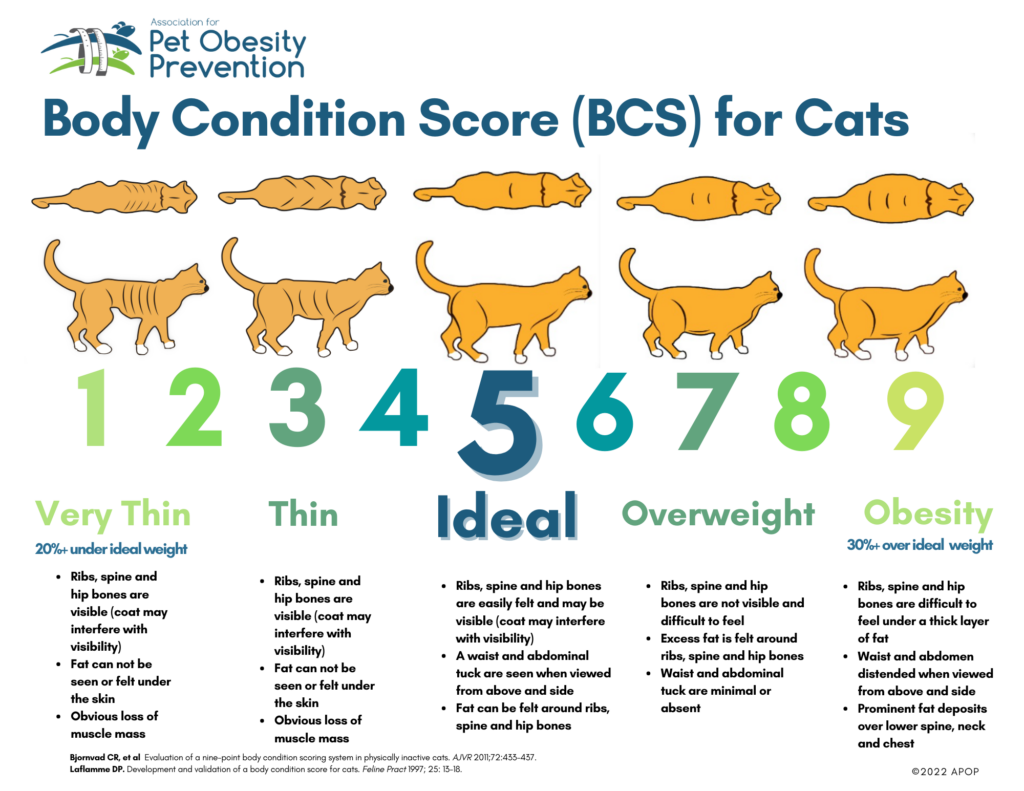So you came into our lounge (or pretty much any animal shelter,) you saw a big bowl of dry food sitting out for all of the cats to graze on and you figured that’s how you should feed your cat too, right? Not so fast.

While funny, the above video is also true (see a proper version of a cat body condition score chart below. The Chonk Chart is actually pretty dead-on.) Many cat lovers are so used to seeing Heckin’ Chonkers that they don’t realize how overweight their cat is, and how this could be negatively affecting the cat’s health.

Keep in mind, we are not veterinarians. You should always talk to your veterinarian about the best thing to do for your specific cat. That said, indoor cats are more commonly overweight, likely due to a combination of having fewer opportunities for exercise, and being free fed. Shelters generally free feed their cats because it’s often a necessary evil when taking care of that many animals at once. (Imagine trying to set down the first bowl of food for cat #1 out of 30 without the other 29 divebombing it all at once.) For cats living in their forever home though, they will ideally be fed measured portions at set mealtimes. This provides the most health benefits for the cat.
For clarification, by “free feeding” we mean you fill a bowl with dry food and top it off whenever it’s low, not measuring how much you’re giving them. By “meal feeding” we mean you feed them a minimum of two meals a day, each meal measured according to the package instructions for the weight and age of your cat.
If your cat is currently free feeding, it’s relatively easy to transition them. Again, check with your vet, but here’s one way to do it:
So talk to your vet, and consider measuring out your cat’s food and feeding them at set mealtimes. While you’re at it, add a few extra shelves for your cat to jump around on and spend a few extra minutes a day burning off some of their energy with one of their favorite toys. We know you already love them to pieces or you wouldn’t have read this far. We’re just just hoping to give you a few more ways to be a rockstar cat parent. 😸